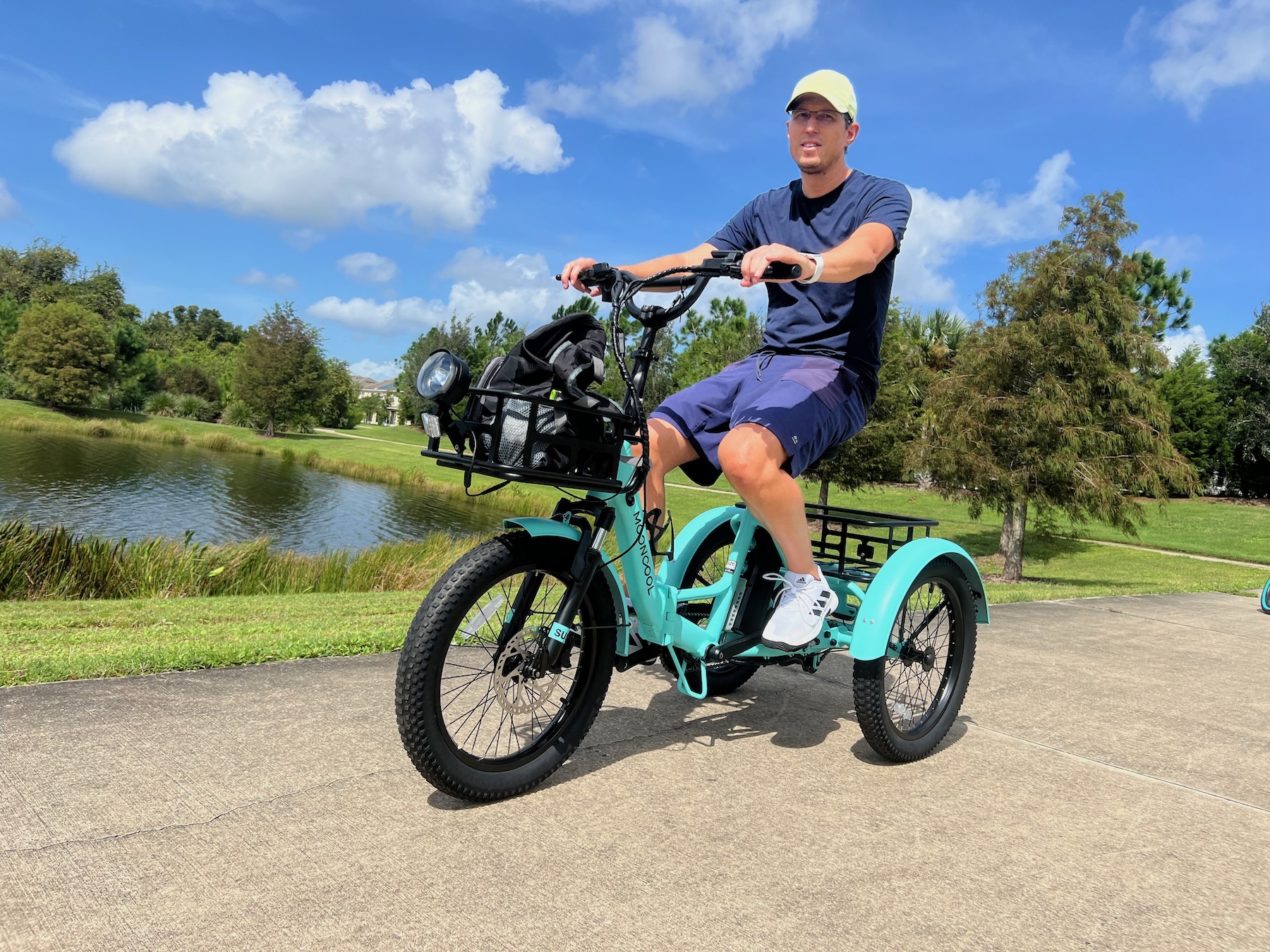
Sign up for daily news updates from CleanTechnica on email. Or follow us on Google News!
Recently I collaborated with David Cebon, head of the Cambridge Centre for Sustainable Road Freight, and interested parties on a complete list of all of the abandoned hydrogen bus trials globally. There are a couple of dozen of them, and I’m pretty sure there are more transit agencies that have tried and abandoned hydrogen buses than are currently trying to run them. Of course, there are even more transit agencies that dodged the bullet entirely just by looking at the history of failures and realistic cost workups themselves.
But what about rail? Maybe hydrogen actually has a niche there? Well, chancers keep trying it on, but to typical hydrogen results. Rail sets keep leaving the tracks.
It’s worth starting with the wisest rail organization, or at least the one that publicly patted itself on the back for being smart, Baden-Württemberg. That province of Germany actually used spreadsheets with real numbers in them before buying anything to assess the total cost of ownership and found that hydrogen trains would cost about 80% more over their lifetime than battery-electric and overhead wire powered trains. It said no thanks, of course.
The same can’t be said for its sibling state of Lower Saxony. The rail operator LNVG made the announcement that after running a relatively small number of small passenger regional trains for a few years, and abiding by its contract to buy more last year, it will no longer consider hydrogen trains for anything else. They’re just too expensive to operate, compared to trains with overhead line connections and batteries to bridge the tough spots.
Of course, Lower Saxony is also home to rail operator EVB with their hydrogen trains, which were put onto sidings and replaced with diesel trains in September of 2024 for lack of hydrogen as supplier Linde had a small deflagration incident — that’s industry speak for a hydrogen tube truck blew up — at their hydrogen facility that resulted in sufficient damage that hydrogen was in short supply even for actually sensible use cases in Europe. EVB’s pride of being the first hydrogen train in Europe is likely a little bruised by this.
Not to be outdone, or underdone, or something, the German state of Hesse decided to buy hydrogen trains and received some in 2023. Rhein-Main-Verkehrsverbund (RMV) operates the trains, and has had nothing but trouble. Basically, the trains are just unreliable, mirroring the reality of hydrogen fleets globally, where their inherent fragility and complexity just aren’t being fixed. They finally said enough, train supplier Alstom recalled all the trains to try to fix them — not going to happen — and RMV has leased a bunch of diesel trains to fill the gap in schedules.
Of course, they could have just asked their rail provider, Alston. A European sales executive from the company is on record saying no one would buy their hydrogen trains because they are maintenance nightmares unless the tender was written in such a way as to exclude anything but hydrogen trains. Instead of learning from their own experience, the Lower Saxony experience and the basic math done by Baden-Württemberg, Hesse is still apparently committed to the dead end of hydrogen.
Closing out German failures with hydrogen — what are they putting in the wasser over there? — is the state of Bavaria. It entered into a 30 month agreement with Alstom for a trial of one of their hydrogen trains on a tiny rail line. With luck they’ll dodge the bullet because the contract for the trial is over in September of 2025, and the train isn’t on the tracks yet. However, they’ll still have wasted millions on hydrogen refueling and repair infrastructure.
As for what is in the wasser in Germany, well, it’s hydrogen infused, like scam brands HTWO and Hfactor, both of which claim miraculous health benefits from bottled or canned water with extra gas. Clearly it has hallucinogenic effects on rail operators because the number of hydrogen rail trials in Germany is the highest in the world. More seriously, the country is the leading proponent of hydrogen for energy in Europe, pushing hard for molecules instead of electrons as energy carriers because so many of its companies depend on molecule-for-energy value chains and are resisting transition heavily. It also explains why German truck manufacturer Daimler is seriously trialing liquid hydrogen refueling stations and trucks, an idea whose complete lack of thermodynamic and economic sense is compounded by the massive safety hazard it represents.
But these firms have a lousy excuse, which is that the government for 25 years has been pushing hydrogen hard, long past the point when rational actors realized it had been outcompeted by direct and battery electrification and heat pumps. Some of this is due to former German Chancellor Gerhard Schröder’s close ties to Russia, his in-office and ongoing efforts to keep Germany addicted to Russian gas, and his unsurprising appointment to a million euro a year Board role on Russia’s Gazprom subsidiary Nord Stream AG. That’s led to Germany’s Potsdam Institute for Climate Impacts (PIK) embedding artificially low — incredibly low — prices for hydrogen in its LIMES-EU and REMIND models and being unable to spot how ludicrous the results were just by glancing at them.
So German rail operators have an excuse, no matter how feeble, for buying hydrogen trains, and French rail giant Alstom has the excuse that the customer is always right, even though they clearly feel comfortable telling clients that they aren’t even as they pocket the hundreds of millions for bad technology. That’s likely going to bite them. RMV has been quite vocal about their dissatisfaction, something that’s going to impact transportation manufacturers that get sucked into hydrogen around the world.
The poster child for this right now is Quantron, the German provider of both inferior battery electric trucks and unreliable and more expensive hydrogen trucks. It sold Ikea in Austria, next door to Germany, its short range, expensive battery electric trucks, and then when they couldn’t go distances that were required for some deliveries, sold them expensive hydrogen trucks. Then it went bankrupt because it was wasting lots of money on hydrogen trucks instead of selling reliable, effective, reasonable range electric trucks. After all, when Mercedes is selling a battery electric truck with 150 km more range for €20,000 less than Quantron, and Quantron’s answer is hydrogen, you just know which company is going to survive. Hydrogen can seem appealing to manufacturers, but it’s a strategic trap.
That all said, it’s not like Germany is alone in this rolling stock folly. There are other places that for reasons without basis in economic, technical or service reality have decided that they have millions to throw away on hydrogen trains.
Foshan in China is worth a mention. That city decided to be a contrarian in the country, and while every other city went battery and grid tied electric with rail and buses, Foshan boldly introduced an industrial strategy based around fuel cells and hydrogen. As a result, it has more hydrogen buses on its roads than any other country in the world. Of course, even there battery electric buses outnumber the hydrogen ones. But it’s also home to a rusting set of tracks that once saw a hydrogen tram providing inferior service daily. That tram is now rusting somewhere, and if the tracks haven’t already been dug up and turned into consumer goods, it’s likely to happen any day now.
Hyundai Rotem has secured a contract to supply 34 hydrogen fuel cell trams to the city of Daejeon, South Korea. The agreement, valued at approximately $201 million, was signed in July 2023. The trams are scheduled for delivery between the first half of 2026 and mid-2028. That’s going to end badly, but South Korea is drinking that hydrogen fortified water as well, with equal impacts on rational thought and the ability to use spreadsheets.
In March 2021, 4 French regions—Auvergne-Rhône-Alpes, Bourgogne-Franche-Comté, Grand Est and Occitanie—ordered dual-mode train sets powered by electricity and hydrogen from Alstom again. The total cost for the project is €231 million. They are supposed to start service in 2025. Only Grand Est shares a border with Germany, so the intellectual contagion isn’t due solely to German influences. However, once again these regions are ignoring their rail provider and results from neighboring Germany. It’s going to end predictably. That said, hydrogen is the Champagne of transportation fuels and the French do like their wine. Perhaps they’ll persist long past any reasonable timeframe just out of Gallic contrariness.
Since 2021, North American Class 1 railroad CPKC — the merger of Canadian Pacific and Kansas City Southern railroads —has been conducting service trials with hydrogen-powered locomotives, powered by Ballard’s fuel cell modules. As of September 2024, these locomotives have completed over 3,540 km in mainline tests, which is both a nothing burger in terms of distances and likely means that the fuel cells are about to die of old age. North America is unique globally in claiming that electricity couldn’t possibly power trains, ignoring that every other continent in the world is quietly doing exactly that.
Class 1 railroad CSX decided that it will not stand that CPKC is alone in wasting money pretending that hydrogen is fit for purpose for rail, and introduced its own hydrogen fueled locomotive, again with Ballard’s money losing products providing the electricity. More trials, no operations.
After a good run ignoring hydrogen and focusing on direct and battery electrification, India is about to launch its own hydrogen passenger train. It’s unclear why given that India will have achieved 100% heavy rail electrification this year, and this isn’t a twee tourist train like others targeted for the molecule under India’s Hydrogen for Heritage rail program that aims to modernize and decarbonize historic and iconic routes like the Darjeeling Himalayan Railway, the Nilgiri Mountain Railway, and the Kalka-Shimla Railway. Putting overhead wires on those incredibly scenic routes apparently wasn’t on, but they’d be an improvement over the diesel engines operating there today. Once again, not paying attention to spreadsheets or experiences.
The Italian government has allocated €300 million to replace aging diesel trains with hydrogen-powered alternatives across select routes. These trains will operate on non-electrified lines, particularly in regions where full electrification is not considered feasible. Apparently Italian rail operators aren’t paying attention to battery energy density and cost curves, as well as hydrogen train trials as well. Alstom again as well as Stadler are going to be supplying the trains that will end up rusting on sidings, replaced by reliable battery electric trains and some more overhead wires. They aren’t even getting stylish Italian trains, so no one is going to be happy.
In August 2023, Sarawak Metro introduced a prototype hydrogen-powered Autonomous Rapid Transit (ART) vehicle in Kuching, Malaysia. Developed by CRRC Zhuzhou Institute, this three-car, trackless tram is designed to operate on dedicated lanes, offering a sustainable public transportation solution. It’s supposed to be the backbone of the transit system, but if so, the transit system will need a wheelchair. Chinese firms, like Alstom, Stadler, New Flyer and many more, are happy to sell customers bad products for more money if the customers insist. The odds of the customers getting good warranties and service are low.
Finally we have the sole Canadian trial, a tourist train that ran back and forth on a 90 kilometer route in Quebec for three months in 2023. I put that down to the failed Quebec firm Bombardier, whose rail operation was swallowed by Alstom when Bombardier’s insistence on taking existential risks under the assumption that the Quebec and national government would always bail them out resulted in the predictable collapse of the firm. I suspect the train will never return to service and the route will be quietly electrified with batteries or overhead wires.
You’ll note that organizations that have already tried hydrogen trains have had the very predictable failures, with several German states saying never again, and one managing to avoid sniffing the bubbles effervescing off of the bottled wasser entirely. I’m sure that there are many more rail operators who have quietly created the not-all-that-complicated spreadsheets populated with real numbers for hydrogen and equally quietly just ignored the entire thing. But if you happen to know of more hydrogen failures or failures in the making where rails were involved, please let me know.

Chip in a few dollars a month to help support independent cleantech coverage that helps to accelerate the cleantech revolution!
Have a tip for CleanTechnica? Want to advertise? Want to suggest a guest for our CleanTech Talk podcast? Contact us here.
Sign up for our daily newsletter for 15 new cleantech stories a day. Or sign up for our weekly one if daily is too frequent.
CleanTechnica uses affiliate links. See our policy here.
CleanTechnica’s Comment Policy




